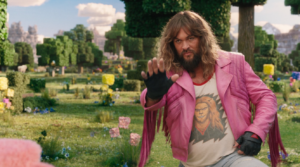Fate: The Winx Club Flop

Image courtesy of Netflix
By Kat Kaderabek
My childhood experience with Nickelodeon’s Winx Club was limited; however, I knew enough about the show to know that Netflix’s newest adaptation of the fairy-flying cartoon was completely disrespectful to the original series.
Now a live-action adaptation, Nextflix’s Fate: The Winx Club possesses a good storyline, but fails drastically as an accurate representation of the beloved childhood show. While the premise is the same – earth-born fairy Bloom attends Alfea Academy in order to master her uncontrollable fire powers – the relations stop at the very basic plot. Several characters from the original show were eliminated, including a key member of the Winx Club, Techna.
Regardless of its accuracy drawbacks, the plot of Fate is visually engaging but incredibly predictable. This adaptation follows the run-of-the-mill hero story with little surprises. While the characters possess dynamicity, they fall flat against the dull writing and basic plot.
One such character is Terra, an addition to the Winx Club and an earth fairy who projects positivity and happiness with every action. While she is not in the original show, she holds a key role in this new series, using her powers to rescue the girls from trouble several times. As the token outcast of Alfea, she tries her best to break from the confines her social status has kept her in, and even achieves this in rare moments of interesting, witty dialogue that address the social undertones of high school.
Terra’s refreshing personality can then be contrasted with that of main character Bloom, who, while beautiful and genuine, possesses a savior complex that drives her every move. Not only that, but Bloom is single-minded and at times is very selfish in her quest to discover who she truly is. It is tropes like these that are supposed to make the main character relatable, but Fate over-does Bloom’s identity crisis to the point of annoyance.
The audience isn’t the only one who shares in annoyance; Bloom’s roommate, water fairy Aisha, also calls her out on her selfish and stupid acts of rebellion. Aisha, played by Precious Mustapha, is one of several characters of color that have been interwoven into the new adaptation. This inclusivity is one positive note about the show against a sea of flaws.
Fate should also come with a warning to the children who watched the original show. This adaptation is surely geared towards these children, now at least a decade older, and not the current generation. It is surprising to see a portrayal of such beloved characters smoke, drink, and sexually interact with one another. To say it was a bit of a shock was an understatement. The delivery of such content was also lewd, unoriginal, and inaccurate to reality. And while this is a show about magical fairies, the basics of teenage attraction are not rocket science.
The only other compelling aspect of the show is the beautiful and mystical scenery. Filmed in County Wicklow, Ireland, the magnificent waterfalls, dense forests, and stunning castles are visually impressive in almost every scene; this is a key draw in keeping audiences entertained. It also assists in the creation of the fairy world as another dimension of knights, monsters, and magic.
With only a mere six episodes, Fate also seems incredibly short. There is little development amongst characters and instead employs lots of action that seems pointless. Scenes of training intermingle with panned out makeout scenes that leave viewers without dialogue, context, and desire to keep watching. In other words, Fate offers idle development with impractical action.
Currently, Fate has yet to be renewed for a second season on Netflix despite its massive cliffhanger that leaves the fairy world uneasy and unexpecting of the horrors to come. If a second season arises, the writers would do well to develop the characters and their relationships in a more sophisticated manner than focus on the predictable actions of said characters.







